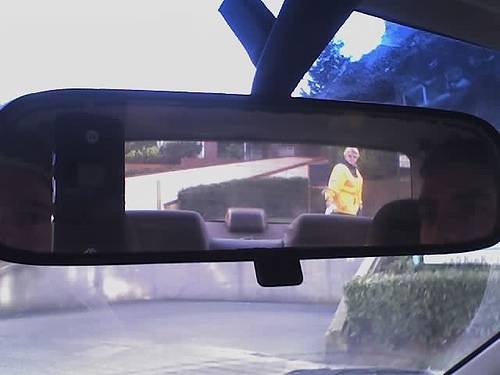
A standard mirror is made up of a flat piece of glass mounted on a highly polished metal surface. The surfaces are parallel to each other so when a light ray is shined at a mirror, it passes through the glass, bounces off the metal, and comes right back through the glass to the viewer's eye.
Bright lights being reflected off a mirror can really impede the viewer's vision. Think of what happens if you take a flash-photograph of your reflection in a mirror. The glare takes over the image. For drivers, headlights would create exactly this type of problematic glare, particularly at night, if rearview mirrors were designed like regular mirrors.
Luckily, rearview mirrors have special "dimming" settings that counteract this problem. Most car manufacturers employ quite a simple design to make this glare-resistant night setting possible.
What is special about rearview mirror design is that the front and back surfaces are not parallel. Instead, they are at a slight angle to each other. This means that, from the side, the glass piece is wedge-shaped. The back surface is coated with extremely reflective silver while the front surface is only faintly reflective, as it lacks any special coating. This means that any time you look in a rearview mirror, you are looking at two separate reflections at the same time, one much dimmer than the other.
When the sun is out, the mirror is tilted in such a way that you are looking at the reflection in the more reflective back surface. At the same time, the less reflective front surface is dimly reflecting the car's back seat. What you see during the day, then, is a reflection much like what you would see in a bathroom mirror, with the second image too weak to be noticeable.
At night, the silvered surface reflects headlights much too brightly, mimicking the effect of a flash-photograph taken in the bathroom. This glare would cause dangerous vision problems for drivers, so they must tilt the mirror (often by just pressing a button) into "glare-resistant" mode. The tilting action points the mirrored surface at the ceiling and, in turn, the blinding light. When you drive at night, you are actually looking at the image reflecting off the less-reflective glass surface. You can imagine this by, indoors and with the lights on, looking at your reflection in a window at night. It's clear but much dimmer than what you'd see in your bathroom mirror.